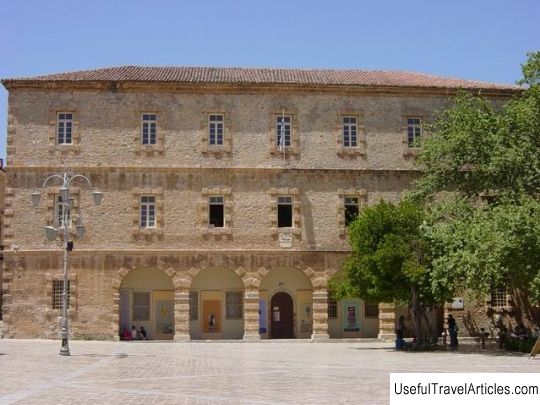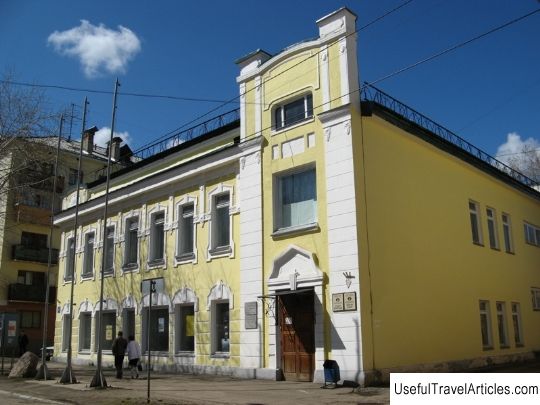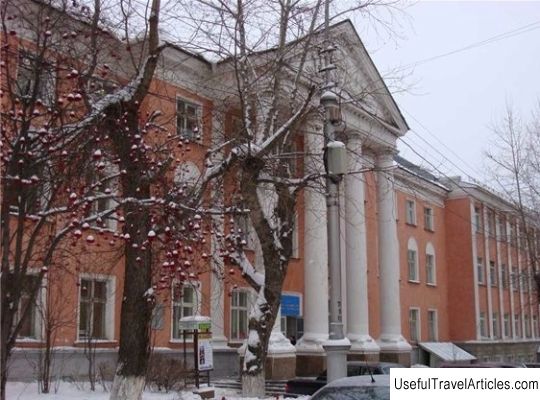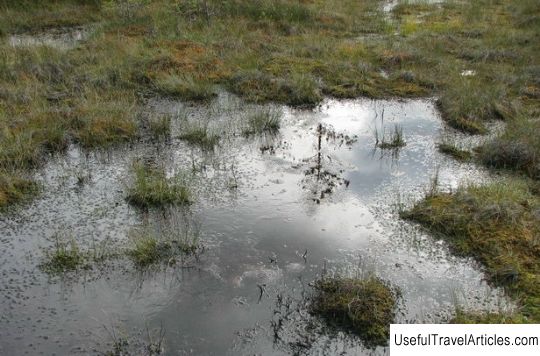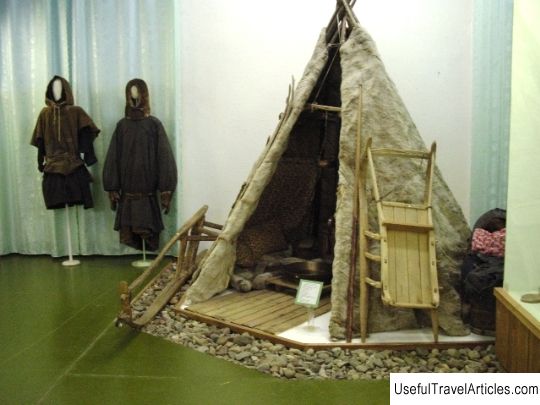Wildlife Sanctuary ”Boloto Don-ty” description and photo - Russia - North-West: Komi Republic
Rating: 8,3/10 (432 votes) 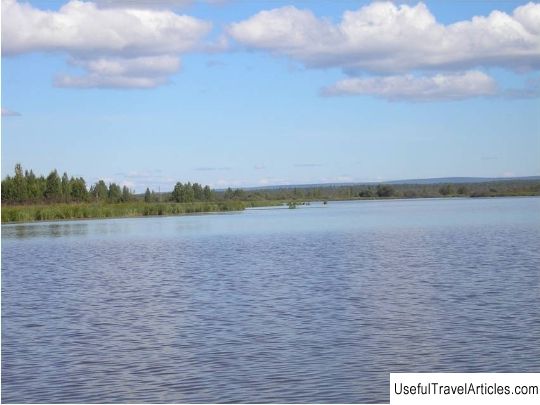
Wildlife Sanctuary "Boloto Don-ty" description and photos - Russia - North-West: Komi Republic. Detailed information about the attraction. Description, photos and a map showing the nearest significant objects. Photo and descriptionThe Boloto Don-ty reserve is a sphagnum floodplain bog located in the south of the Komi Territory in the center of the Ust-Kulom region, southeast of the Don village. The Don-ty swamp is located at the northwestern end of the expansion of the Vychegda river valley, which is occupied by an ancient lowland of the lake and is a relic of a periglacial reservoir that existed in this place, which was drained by Vychegda after the first postmaximal glaciation retreated. Etymologically, the hydronym “don-ty” comes from the Permian Komi language, where the word “don” means “transparent”, “clean” (after all, part of the swamp is covered only with moss), and the word “nyur” means a swamp. This natural area received the status of a reserve of regional significance in 1978. There are several relict lakes on the territory of the swamp: Donty and Kadam. The reserve was created to preserve rare wetland and water complexes, as well as to protect rare plant species. The modern shape of Lake Donty is elongated; its coastline has a winding outline. The length of the lake is no more than 15 km. The width is 100-500 m, at the Great reach the width reaches 2 km. The surrounding area is occupied by swamps, woodlands and damp meadows. The species composition of hydrophilic plants (not including bryophytes and algae) of the lake is 65 species that belong to 30 families. The species composition of the plant communities of the reserve is distinguished by the presence of rare species in it, which are represented in nature by small populations with a rather narrow ecological amplitude. This is a long-leaved buttercup, a fescue reed. According to the 1960s. here we met the shield-leaved bog flower, which is now included in the Red Book of the Republic of Kazakhstan. The reserve is home to 4 species of nymphs, which are found in the north-east of the European part of Russia. Also, this is one of the few places in Komi where common reed grows in large quantities. Throughout the entire lake space, you can see everywhere the thickets of pondweed paprika at a depth of 0.6-1.2 m and floating at a depth of 1.0-1.5 m. The area occupied by their communities far from the coast plots is 30-50 m2, and in the coastal zone - 3000 m2. In addition to them, there are Alpine pond and Frize pond. The coastal zone is characterized by a strong growth of nymphaeans, among which the yellow capsule is dominant. Its thickets in strips from 3-5 m to 20-35 m and 10-300 m long are observed almost along the entire coastline in shallow waters. Here also grows a yellow egg capsule, a white water lily. Sometimes there is a small water lily. Often you can find a small egg-capsule. Its thickets, covering an area of 100-2000 m2, are found in the western part of the lake and near the Bolshoi reach. In shallow channels and bays between thickets of nymphaeans, submerged hornwort grows in great abundance. The area of his underwater carpets in Turi-kurye, Kuz-kurye, Lebyazhy-kurye is from 400 to 2000 m2. Overgrowing with algae and rising to the surface, they create difficult-to-pass areas. Pemphigus vulgaris is often found near coastal thickets. The coastal thickets are characterized by trifoliate and small duckweed, common mnogorennik, and common vodokras. The lakes of the reserve around the entire perimeter are surrounded by open swampy areas, interspersed with thickets of willow shrubs, mixed with dwarf birch and buckthorn brittle. At the eastern end of Lake Donty, they are replaced by wet meadow habitats dominated by sedges, willow loaf and marigold marsh. In the center and in the west of the lake sedges, marsh horsetail, three-leafed watch, marsh cinquefoil dominate. In the communities of near-water vegetation of Lake Severny, as well as in the Northern Reach, the dominant feature is the common reed. But the spread of reed is limited to a denser sandy soil. In Lake Donty, about 70% of macrophytes are recorded, which are known from the reservoirs of the Vychegda River basin. The territory of the reserve is an atypical genetic reserve of the hydrophilic flora of the Vychegda basin.      We also recommend reading Church of St. Nicholas the Wonderworker at Soykinsky churchyard description and photos - Russia - Leningrad region: Kingiseppsky district Topic: Wildlife Sanctuary ”Boloto Don-ty” description and photo - Russia - North-West: Komi Republic. |
